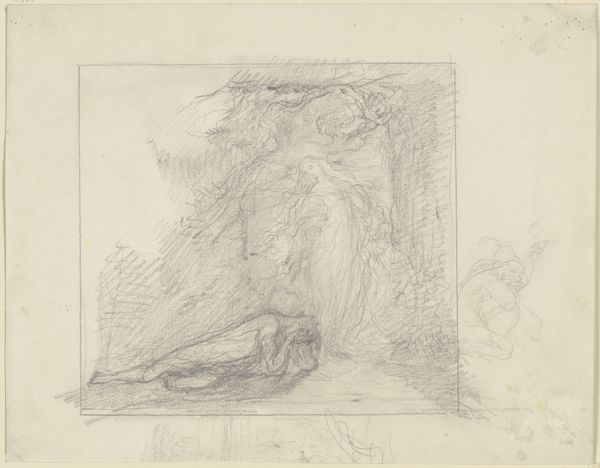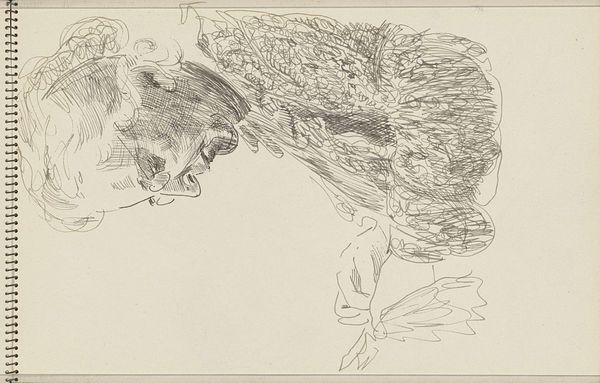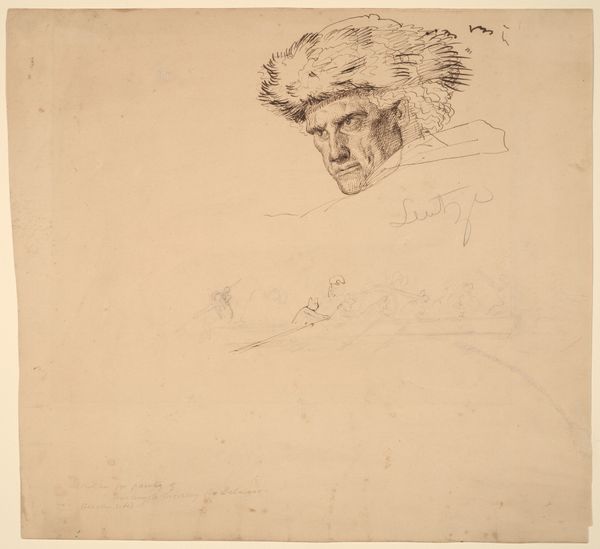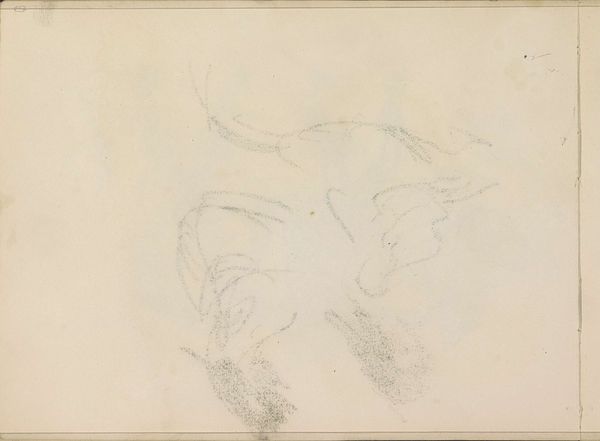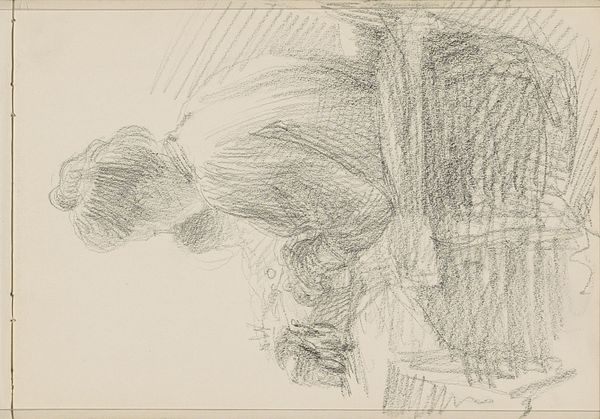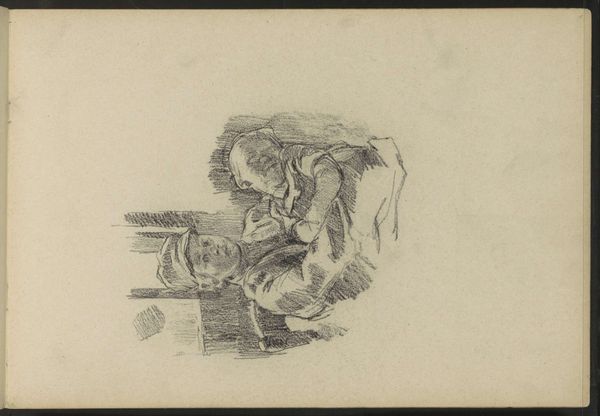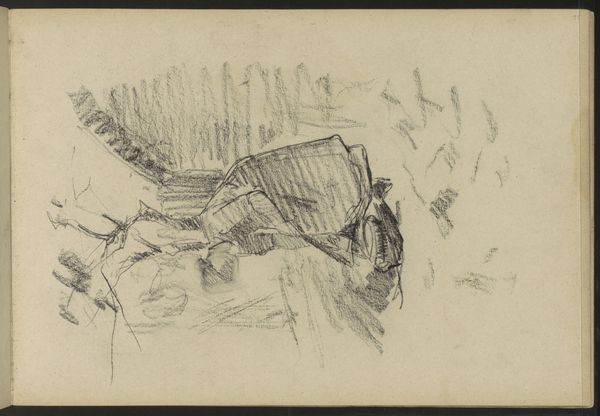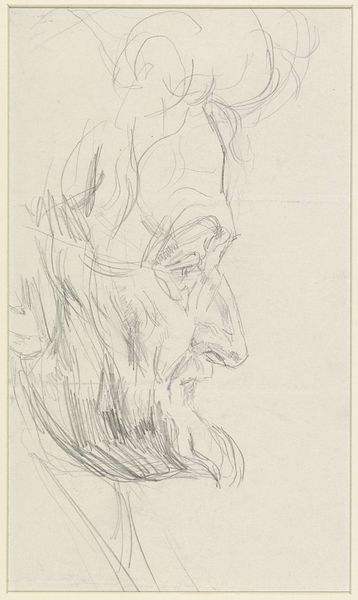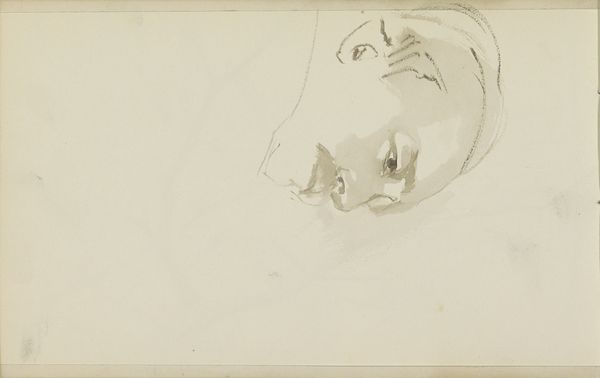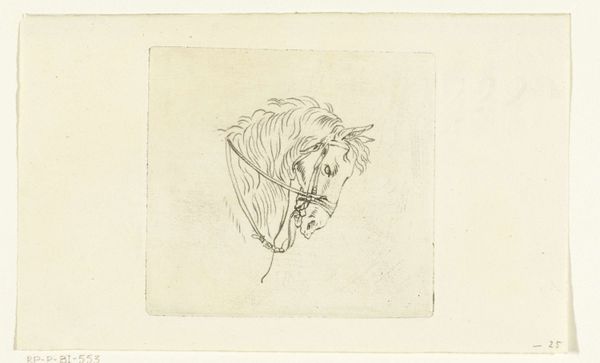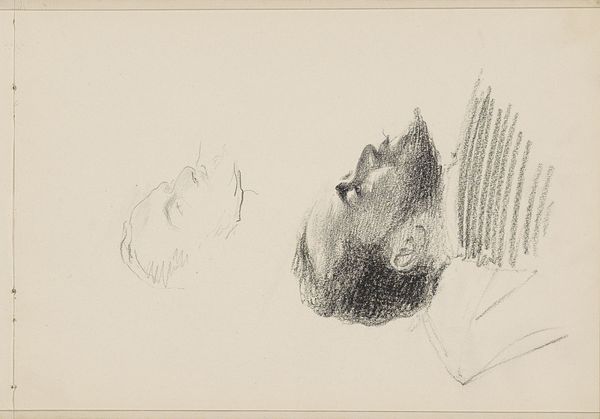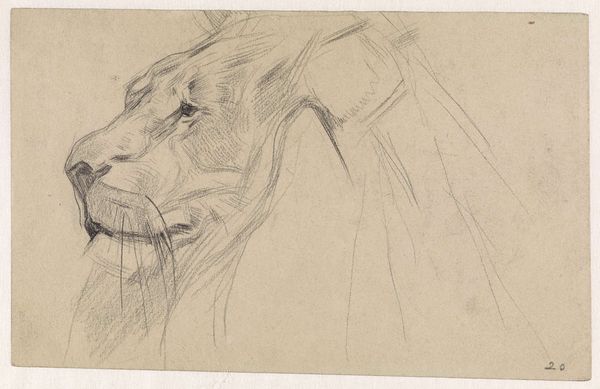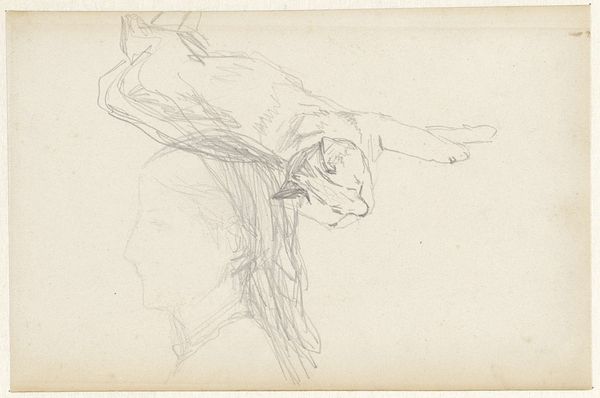
drawing, dry-media, pencil
#
drawing
#
landscape
#
dry-media
#
pencil drawing
#
pencil
#
realism
Dimensions: height 199 mm, width 336 mm
Copyright: Rijks Museum: Open Domain
Editor: This pencil drawing, titled "Rotsen," by Johannes Tavenraat, created sometime between 1819 and 1881, strikes me with its rough, almost urgent quality. What do you see in this piece, beyond a simple depiction of rocks? Curator: Beyond the realism, I see a reflection of the 19th-century fascination with the sublime and the power of nature, and wonder how that shaped perspectives on the colonial landscapes encountered at the time. This sketch, a raw and immediate study of rocks, invites us to think about the intersectional narratives inherent in landscape art: power, representation, and our relationship to the environment. Do you think Tavenraat's approach reinforces or challenges established landscape traditions of the time? Editor: That’s a really interesting perspective! I was just focusing on the lines and shading, but the idea of power dynamics within landscape art never occurred to me. I guess the lack of human presence is something to note too, making nature feel very dominant. Curator: Precisely. And who benefits from this framing of nature as dominant? We must remember how intertwined such artistic expressions were with the societal and political structures of the era. Does that shift how you perceive the image now? Editor: Absolutely. I see how focusing solely on technique, without considering the broader historical context, misses crucial layers of meaning. I definitely have a lot to consider! Curator: Exactly! Art is not just about aesthetics. It reflects, and at times reinforces, the power structures of its time. Now you have a framework to carry with you as you engage with all sorts of visual material!
Comments
No comments
Be the first to comment and join the conversation on the ultimate creative platform.

